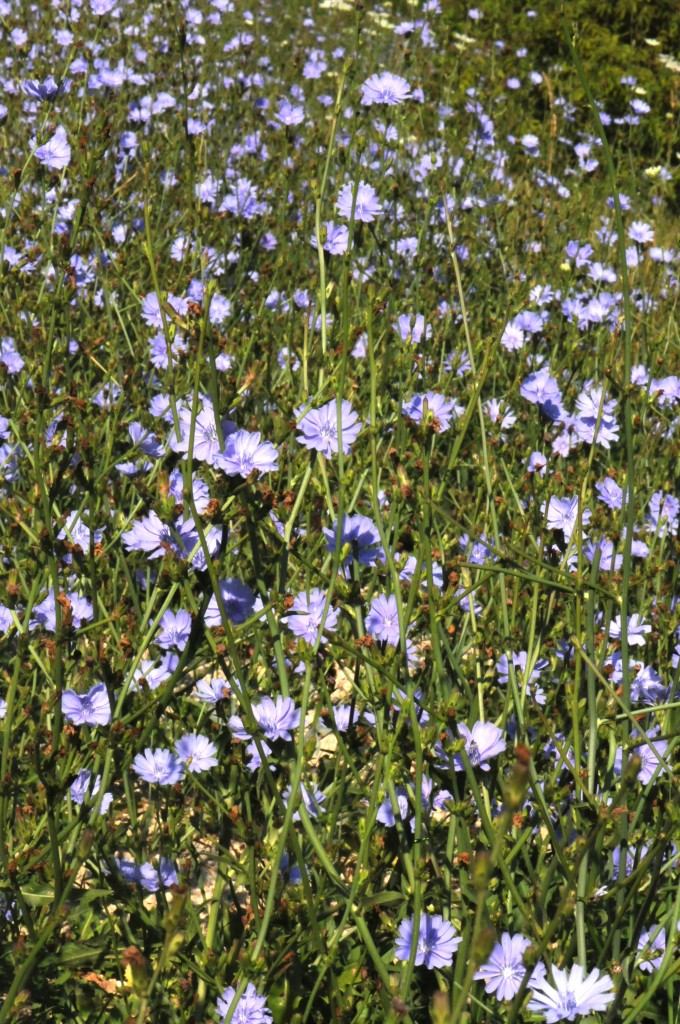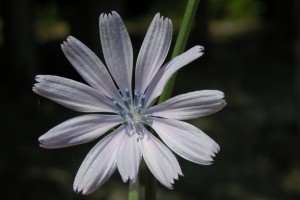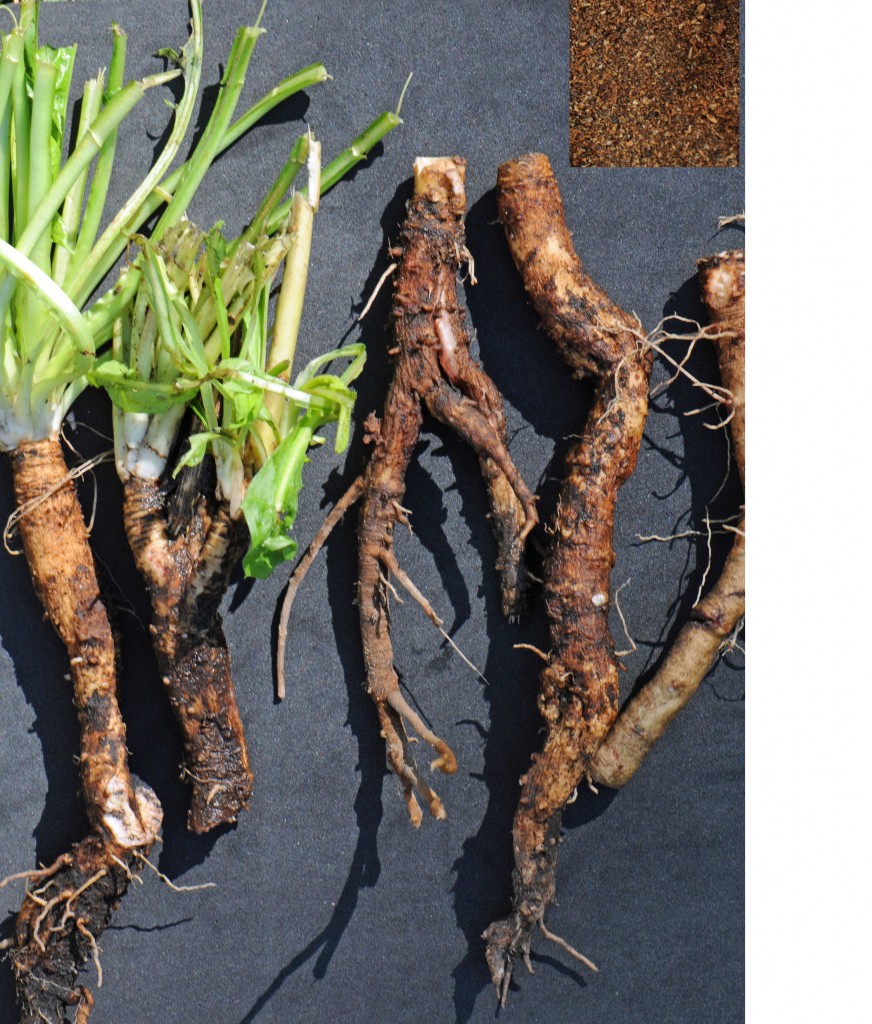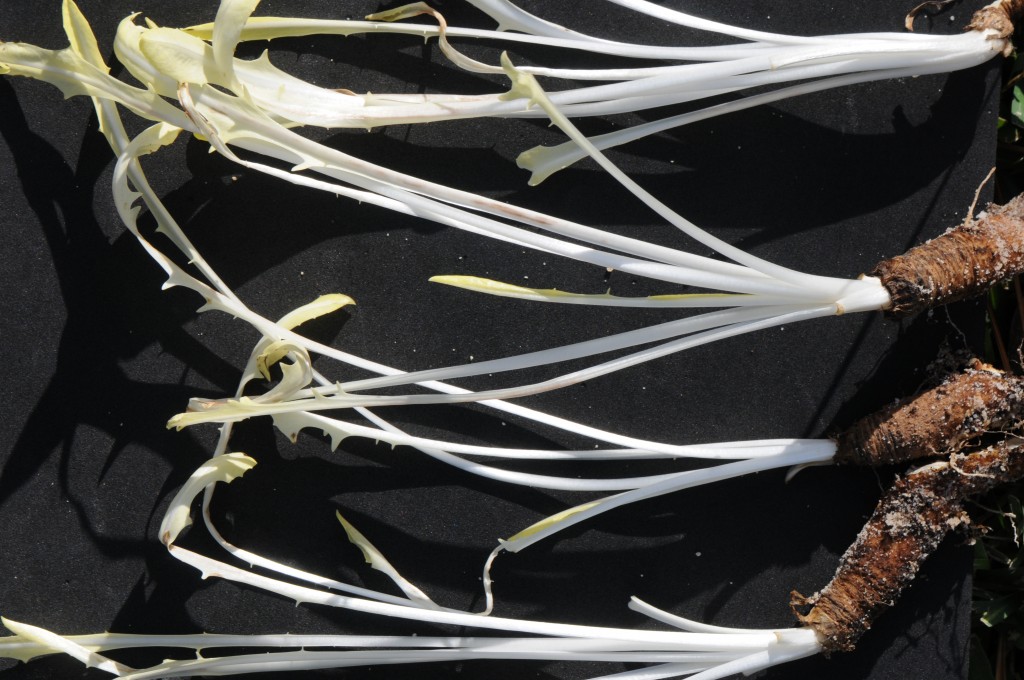Chicory
Like its relative lettuce, the use of chicory (Cichorium intybus) extends back to ancient Egypt where it was considered an aphrodisiac because of the resemblance of the milky juice to semen. It was probably introduced to North America as a food plant and is now a common naturalized weed in just about any disturbed area throughout much of the country. Chicory is an attractive weed, however, and a stand of a dozen plants in flower is striking.
A glorious stand of chicory near Woodman in southwestern Wisconsin in August. The flowers close by mid-afternoon.
A chicory “flower”, actually a collection of eleven flowers. Near Iznik (ancient Nicea) Turkey in July.
Young Chicory shoots are sold as a vegetable in several Mediterranean countries. I have seen wild collected plants in the early spring in a vegetable shop on Mt Lebanon in Lebanon. Perhaps the best-known use for chicory in North America is a coffee substitute by roasting the roots and pulverizing them into a coarse brown powder. Here’s how to make your own chicory coffee.
Collecting Chicory Roots
Collecting Chicory roots may require some effort. You will need gloves, a spade or shovel, and a sharp knife. Grasp the stem of the plant with gloved hands and pull the entire chicory taproot out of the ground. This may require some assistance with the spade or shovel. Use a sharp knife to cut away the roots from the stems. In order to make 4 robust cups of chicory coffee, you will need 10-15 roots.
Freshly dug chicory roots. The roasted ground roots are upper right. (Image from Musselman and Wiggins, 2013).
Chicory Coffee Substitute
10-15 Chicory tap roots.
1 potato peeler.
1 coffee grinder.
Carefully wash the 10-15 Chicory roots under running water to remove any dirt and grit. A vegetable brush or old toothbrush will do the job. Dry the roots with paper towels or allow to dry overnight. Lay roots on a cookie sheet lined with aluminum foil and put in the oven at 350 degrees F. for 45 minutes until the roots are brown. If you camping, you can roast the roots in a saucepan over an open fire. The important thing is to get the roots hard and brown so they can be easily pulverized. When the stems are roasted, put them in a coffee grinder and pulverize into a fine powder. Use of coffee grinders when camping is limited so pounding the dried roots can also be attempted (Recipe modified from Musselman and Wiggins 2013)
Winter Chicory Blanched Leaves
I don’t recall where I first found this procedure but it is a simple and effective way to get some fresh, home-grown salad fixings, a technique I especially valued in the long, dark Wisconsin winters.
Six chicory roots.
Plastic container approximately 3 X 4 feet.
Clean sand
In late summer dig six chicory roots per instructions above. However, thorough washing is not needed. Place the roots in a plastic container filled with garden sand. The sand should be deep enough so that only the very top of the root is exposed. Place the box of sand in a dark place. Within a few weeks, the white succulent leaves will emerge and can be used in salads. This will resemble true endive (Cichorium endiva) but may be more bitter. Extra roots can be stored for a month to six weeks in the refrigerator before planting in the sand, ensuring a supply of fresh shoots through much of the winter.
Copyright 30 September 2015




June 23, 2017 at 2:43 am
Thank you for the blog post. Jones and I are saving to get
a new ebook on this subject matter and your blog post has made people like us to save all of our money.
Your thoughts really answered all our inquiries. In fact,
in excess of what we had recognized prior to when we ran into your great blog.
My spouse and i no longer have doubts as well as a troubled mind because you have actually attended
to each of our needs here. Thanks